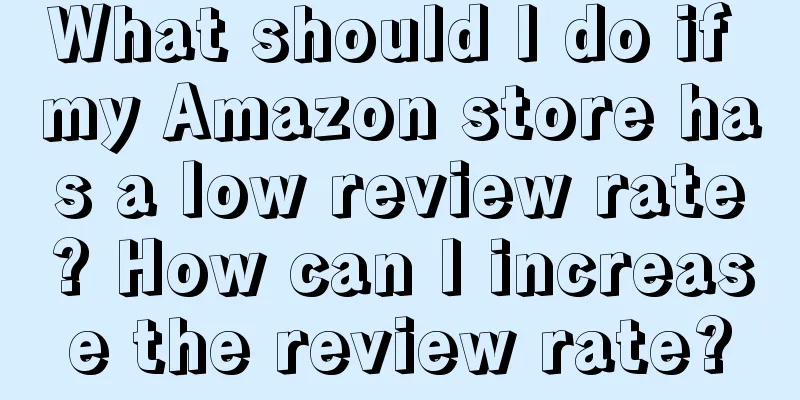|
Once upon a time, social networking was an extremely lively track in the mobile Internet. The core reason was that this track had high user stickiness, diverse gameplay, and strong application scalability. But what I have personally observed in recent years is that there are fewer and fewer social apps that are truly popular. The core logic behind this is that On the one hand, super apps meet most of the social needs of ordinary netizens. On the other hand, the cost of user growth is also increasing amid competition. At the same time, we cannot ignore another trend, that is, the social needs in segmented fields are gradually emerging, and there is still great potential for intensively cultivated applications in more vertical segments within the social track. This also requires today's social industry to use more scientific and rational delivery methods to accurately tap into target groups that have not yet been reached and converted. Data source: Big Data Engine In a sense, entrepreneurs who are still deeply involved in the social track today must have their own unique skills, and among all the priorities they care about, "how to improve the efficiency of growth" must be one of the top options. Data source: iResearch To truly improve growth efficiency, we can break down our goals from a more detailed dimension. In fact, every business can be broken down into the following business formula: Business income = user scale * user LTV In other words, the scale of monetization that a business can ultimately achieve ultimately depends on two factors: first, the user scale of the business, and second, the value contributed by these users throughout their life cycle. Specifically in the social industry, none of these two factors can be significantly improved by relying on a single delivery strategy. Social growth in 2023 requires a combination of measures. On September 14, the "2023 Bytedance Social Industry Annual Partner Conference" was held in Xi'an. The conference expounded many new strategies, new gameplays and new ideas around the growth of the social industry. After listening to the conference, I summarized the following three levels of practical strategies for reference by students in the social industry: 1. Improve delivery efficiency - make the three axes of APP management "growth, retention, and monetization" flywheel turn faster; 2. Improve the efficiency of seeding - break through the growth ceiling from another dimension through people and content; 3. Expand traffic map - expand new traffic through global customer acquisition; These three strategies are a combination of "increasing scale and adding value". Each of them can be implemented in a very specific and practical way. Let's take a look at how these three strategies can be implemented. 1. Improve delivery efficiency - make the three axes of APP management "growth, retention, and monetization" flywheel turn faster Simply put, operating an APP is nothing more than doing three things well: "growth, retention, and monetization." For some social apps, these three things are separated to a certain extent. The growth department is not responsible for subsequent retention, and the data is not fully integrated. This often results in a situation where traffic does not bring much retention. Therefore, how to take into account the subsequent retention and monetization from the very beginning has become a challenge for the social customer growth department. A pragmatic strategy is to start from the end in mind, and think more carefully about growth efficiency from the perspectives of retention, monetization, and ROI from the very beginning, make full use of the platform's various deep-transfer automation tools, optimize the process based on the results, and make the "growth, retention, and monetization" flywheel turn faster. "I know that the deep-transfer products of major platforms can solve the problem of uncoordinated growth, retention, and monetization, but the threshold for actually launching deep-transfer products is actually not low. For example, how to choose the right retention and paid segmentation conversion goals, how to pull data across scenarios, how to avoid conflicts between different delivery plans, how to efficiently create and shut down large advertising plans... Even our very experienced optimizers may not be able to cope with all these problems." A person in charge of the distribution department of a social app said. This passage actually epitomizes the pain points that many social apps face when using deep conversion products. I have observed that UBA, the vertical automation product launched by ByteDance, is actually dedicated to solving these problems. First, it can fully connect multiple download packages of an application and data from multiple traffic scenarios. For example, a social app may have a mini-program version in addition to the APP version. The APP may also have different disguised download packages. Its various growth data may come from advertising, expert recommendations, or fans of the official account. UBA can integrate and connect all these data to improve the scale and efficiency of running volume. Normally, when the social industry promotes an App, it usually isolates and releases it based on the granularity of the plan, and the releases of different plans are not coordinated with each other. In this way, even if the promotion target is the same APP, the plans created around it will compete with each other for volume, resulting in a large number of invalid plans, and not overall optimization around the application itself. Now social apps can use UBA to overcome this problem. Different from the previous delivery based on plan granularity, it uses the granularity of "application" as the delivery target and optimization direction. Verified by experimental data, UBA delivery can achieve a 10%-25% increase in volume while keeping the backend ROI unchanged. Let’s look at an actual case. A dating APP wanted to obtain high-quality traffic during the summer vacation, so it introduced UBA testing before the holiday. When launching the app, the client not only ensured sufficient budget but also used more expressive materials such as videos, and then reasonably set deep conversion goals such as retention and payment. In the end, the dating app achieved impressive statistics of doubling its holiday volume, increasing its running capacity by 30%, and increasing its ROI by 15%. Growth is a series of combined punches. Vertical automation products such as UBA are a powerful tool for the social industry to reduce costs and improve efficiency at the growth level. Next, let’s take a look at how social apps, which are naturally closer to users, break through the growth ceiling from another dimension. 2. Improve the efficiency of seeding - break through the growth ceiling from another dimension by using people and content It is often not a one-shot process for users to download and use an APP. Social apps also require a process from the beginning to the end. The target audience of social apps are usually young netizens who are open to the world, interested in new things, and want to expand their social circles. They are naturally more interested in fresh people and purer content. Therefore, people and content can influence the users of social apps from another dimension, and complete the application of planting and weeding in a subtle way. The data from Bytedance also proves this point. Among the A3 (users who have generated Ask in the Bytedance Cloud Map O-5A model, i.e., grass-planting users) accumulated in the past 60 days, 25% will make purchases in the next 15 days. Influencers and the content they produce are the key to increasing the A3 grass-planting reservoir. “Users today are very smart. Previously popular advertising materials, such as decompression videos, overbearing presidents + helicopters, and reversal dramas, had high click-through rates and good conversion rates at the beginning, but users soon got tired of them. They adapted to these routines much faster than we could innovate new materials. Instead, a natural recommendation from their favorite blogger, which was straightforward and without any routine, often achieved unexpected conversion results. Of course, there are many techniques worth pondering here. First, you have to find the right person, then you need to find a way to get the influencer to shoot material that fits both his or her personality and the characteristics of your product, and then you have to be willing to spend money to amplify those materials with good conversion effects through advertising. In short, the more you think about this, the more details you need to consider. " A social app growth manager shared his experience in launching the app. Indeed, social apps can use huge star maps to use people and content to reach users who are difficult to attract with hard advertising. Of course, it is not easy to let experts really help you to plant and remove grass more efficiently. Here are three practical suggestions I have summarized: 1. Before launching: sufficient insight and decision-making, choose the right people It is not easy to select the right one from more than one million influencers. Social apps can use the huge amount of data from various dimensions of the star map to examine the matching degree of influencers. Specifically, you can pick out the most suitable ones from a large number of experts through the Expert Plaza, Expert Recommendation Assistant, Expert Tags and analysis tools of Juleliang Star Map according to your own marketing goals and product features. In addition to the selection and recommendation of influencers, social apps can also use the tools provided by Julebao Star Map to gain insights into hot topics in the industry before launching, and evaluate and make decisions on projects more comprehensively before launching. 2. Launching——Choose the appropriate cooperation method In order for social apps to maximize their marketing effectiveness, it is critical to choose a cooperation model that suits their products. Jueliang Star Map has upgraded a variety of different tasks and modes, such as live broadcast tasks, submission tasks, etc. Social apps can choose the most suitable form of cooperation based on their own product characteristics, and can also add some additional gameplay. For example, an APP invites influencers through a huge star map to encourage users to click on the windmill application download component during the live broadcast, guide fans to download the app and search for the corresponding influencer nickname in the application, so that they can purchase the benefits prepared by the influencer for fans at a low price. This approach ultimately yielded impressive results: the cost of acquiring new customers decreased by more than 70% and the cost of increasing followers decreased by more than 50%. 3. After delivery – don’t waste the value of content Obviously, the content produced by influencers will be more infectious and warm in value. At this time, "native advertising" can be used to amplify the value of influencer content. The essence of native advertising is “content is advertising”, which is a deep integration of content and advertising. Today, as the life cycle of advertising materials and plans has become significantly shorter, native advertising can interact with target users in a more natural and less marketing-oriented way, both in terms of form and traffic distribution, and achieve the goal of planting and pulling grass in a subtle way. Therefore, do not waste the value of Jueliang Star Map’s content. In order to better realize the delivery of native advertising, Jueliang Star Map has optimized the delivery link of the global joint investment effect customers, and can deliver content in parallel in two delivery systems while realizing content release. Therefore, if you find native material with impressive data in an influencer’s business orders, don’t miss the opportunity to amplify the value of the influencer’s content with native advertising. Above, we have explained how the social industry can maximize the value of influencers and content on Jueliangxingtu through different strategies, which is to work hard on the depth of traffic. Next, let’s take a look at how the social industry can expand its new traffic map within the system of Big Data Engine in terms of the breadth of traffic. 3. Expanding the traffic map - expanding the new traffic map through global customer acquisition In the traffic system of Bytedance, in addition to super-large apps such as TikTok and Toutiao, there is also an extremely large group of small and medium-sized apps covered by Pangolin. These traffics are extremely diverse, not only covering all time periods, but also penetrating into high-frequency behavioral scenarios such as travel, entertainment, reading, and photography. The value of Pangolin traffic lies in that, compared with the various APPs on the main side of the massive engine that have been repeatedly launched, advertisers’ penetration rate and coverage of these small and medium-sized long-tail applications will be relatively low. Taking social networking as an example, according to official data from ByteDance, social apps only reach 15% of the target users of long-tail traffic, so these traffic often bring unexpected marginal benefits to advertisers. Pangolin is a special existence for the social industry. On the one hand, applications can achieve user growth through Pangolin's delivery end, and on the other hand, they can also achieve efficient monetization through Pangolin's monetization end. Today we will focus on how social apps can achieve new traffic breakthroughs through reasonable investment in Pangolin. For social apps, how to reasonably select deep conversion targets is crucial to achieving ideal ROI. Some official data reveals a number of valuable delivery strategies: Let’s first look at the deep-transformation goal of retention. An important change in customer delivery is that it has gradually shifted from single delivery to combined delivery. For example, in 2021, double-retention bidding can account for 99% of the total delivery, while by 2023, 25% and 5% of customers will begin to switch to "seven-retention double bidding" and "daily retention" respectively. Judging from the data, the daily retention curve decays more slowly than the next-day retention curve. This also involves an iteration at the cognitive level - that is, the core value of new deep transfer products such as "daily retention" lies in "breaking the circle", so that it can reach people who cannot be effectively reached by the original deep transfer, rather than digging out smaller circles among the original population. Looking at the payment target, according to official data, the proportion of each payment has increased significantly from 8.4% in 2022 to 43.8% in 2023. The logic behind this is that "pay per time" has a higher ROI - compared to "direct payment", "pay per time" has a 220% increase in ROI 0 and a 532% increase in ROI 6. It can be seen that from the trend of deep transfer products, whether it is retention or payment, combined delivery is an important trend, and social apps can flexibly choose in actual operations. As an important module for global customer acquisition, Pangolin has its own distinctive characteristics in terms of traffic. The above-mentioned combined delivery is only one feature of Pangolin's delivery process. Social apps can adopt appropriate strategies based on their own specific practices and data feedback to reach those people who have not been reached before in Pangolin's system. “We Sell or Else.” This famous saying by David Ogilvy last century still clearly explains the true meaning of advertising today - effectiveness is king. Today, the Internet advertising industry, known as "computational advertising," is a highly digital industry. The actual effects of any product, strategy, or service can be presented through clear data, and advertisers who vote with their feet will ultimately choose the products and services that bring them the greatest returns. In my opinion, the products, strategies and services disclosed by ByteDance at the annual social industry partner conference are also very result-oriented. That is, everything revolves around the core formula of "business revenue = user scale * user LTV", optimizing and improving the efficiency of advertisers' delivery from the two different dimensions of "increasing scale and adding value". For the social industry, as long as you fully understand the logic behind these products, strategies and services, and based on scientific and reasonable ideas and methods, you can truly open up the Ren and Du meridians of "quality" and "quantity" in actual delivery, fight against the entropy increase within the original growth system, and achieve better ROI. About the author: Wei Xi, the producer of the public account "Wei Xi Zhi Bei", a science and technology columnist, specializes in writing long articles and focuses on analyzing the underlying logic of the Internet and social sciences; |










